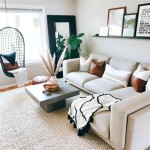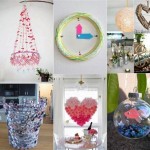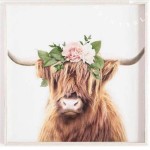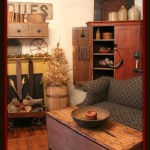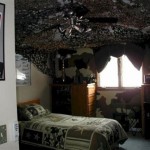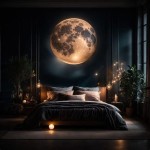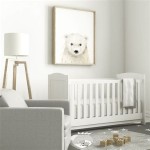How To Decorate Victorian Houses
Victorian houses, known for their intricate details and ornate features, present a unique decorating challenge. Balancing historical accuracy with modern living requires careful planning and an understanding of the Victorian aesthetic. This guide will explore the key elements of Victorian interior design and provide practical advice for decorating a Victorian home.
One of the defining characteristics of Victorian decor is its richness and layering. Walls, ceilings, and floors often feature multiple patterns and textures. Consider using wallpaper with floral or damask patterns, paired with richly textured fabrics like velvet, brocade, and lace. Area rugs, preferably Oriental or Persian style, can add warmth and depth to wooden floors.
Color palettes in Victorian homes typically drew inspiration from nature. Deep jewel tones such as ruby red, emerald green, sapphire blue, and amethyst purple were popular choices. These rich colors were often complemented by lighter shades like cream, ivory, and gold. Modern interpretations can incorporate these colors in varying degrees, from subtle accents to bold statement walls.
Furniture played a significant role in Victorian interiors, both functionally and aesthetically. Heavy, ornately carved pieces crafted from dark wood like mahogany, walnut, or rosewood were common. Look for pieces like chaise lounges, button-tufted sofas, and claw-footed tables. Antique stores and auction houses can be excellent resources for finding authentic Victorian furniture, but reproductions are also readily available.
Window treatments in Victorian homes were designed to be both decorative and functional. Heavy drapes made of velvet, damask, or lace were used to control light and provide privacy. Layering curtains with sheers and valances created a luxurious and opulent effect. Cornices and tiebacks further enhanced the window treatment, adding to the overall decorative scheme.
Lighting is another crucial element of Victorian decor. Gaslight fixtures, though less common today, served as the primary light source during the Victorian era. Modern interpretations can incorporate chandeliers, wall sconces, and table lamps with a vintage aesthetic. Crystal, brass, and wrought iron are popular materials for Victorian-style lighting fixtures. Ensuring adequate lighting for modern living while maintaining the period feel requires careful selection and placement of light sources.
Architectural details are a hallmark of Victorian homes. High ceilings, intricate moldings, and stained glass windows are just a few examples. These features should be highlighted and preserved. Restoring original woodwork and highlighting its beauty with appropriate paint colors can significantly enhance the Victorian aesthetic. If original features are missing, consider adding period-appropriate reproductions.
Accessories play a vital role in completing the Victorian look. Mirrors, framed artwork, porcelain figurines, and decorative boxes were commonly used to adorn shelves and tables. Collections of objects, such as clocks, books, or antique china, were also popular. When selecting accessories, consider the overall style and color scheme of the room. Avoid clutter by carefully curating and arranging items.
Fireplaces were often the focal point of Victorian living rooms. Marble or cast iron fireplaces with ornate mantels provided warmth and visual interest. Decorating the mantel with a mirror, clock, and decorative objects enhances its presence. If the fireplace is functional, using period-appropriate fire tools and accessories adds to the authenticity of the space.
Maintaining a balance between authentic Victorian elements and modern functionality is crucial. While incorporating Victorian-inspired décor, consider modern lifestyle needs. Integrating modern technology, such as televisions and computers, seamlessly into the Victorian aesthetic requires creativity and careful planning. Concealing modern conveniences within antique cabinets or incorporating them into existing architectural features can maintain the period feel without sacrificing practicality.
Decorating a Victorian house is a rewarding process. It involves understanding the historical context of the era and blending it with contemporary living requirements. By carefully selecting furniture, fabrics, colors, and accessories, it’s possible to create a space that respects the home's historical significance while fulfilling the needs of modern inhabitants.
Researching Victorian-era interior design books and visiting museums or preserved Victorian homes can provide valuable insights and inspiration. Understanding the principles of Victorian design, such as symmetry, layering, and ornamentation, will guide the decorating process. Ultimately, the goal is to create a visually appealing and comfortable space that reflects the beauty and elegance of the Victorian era while accommodating contemporary lifestyles.
:max_bytes(150000):strip_icc()/alaina-kaczmarski-home-living-1-9b10209fb438487789b81418ed595c2c.jpg?strip=all)
How To Do Victorian Interior Decor The Sophisticated Way

5 Modern Decorating Ideas From A Renovated Victorian House Goodhomes
:max_bytes(150000):strip_icc()/ScreenShot2021-08-18at3.46.48PM-0881e8625a754c1a94a611f3e74a6226.png?strip=all)
27 Modern Victorian Decorating Ideas That Aren T Stuffy

Small Victorian Terraced House Interior Design Ideas Soho Blog

Victorian Interior Design Style History And How To Create A Modern Decorator New Jersey

What Is Modern Victorian Decorating Style Soho Blog

9 Best Victorian Interior Design Ideas To Beautify Your Home Foyr

9 Best Victorian Interior Design Ideas To Beautify Your Home Foyr

Modern Victorian Decorating Ideas Cb2 Idea Central

Decorating How To Use Victorian Colours In A Modern Home Houzz Ie
